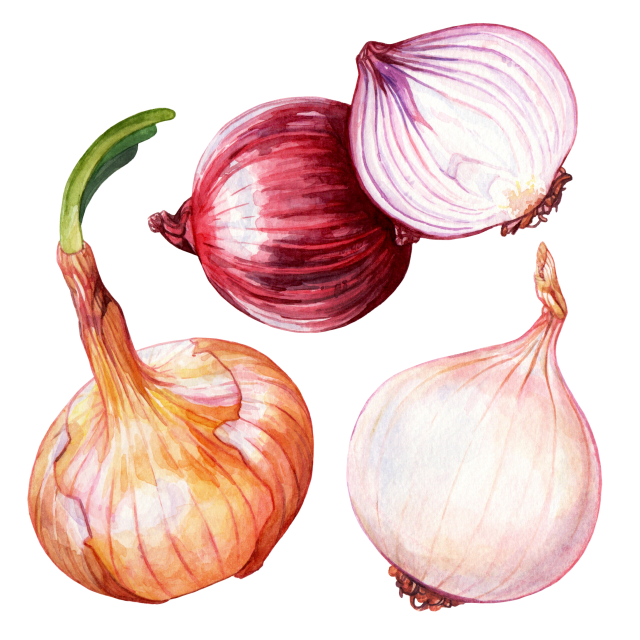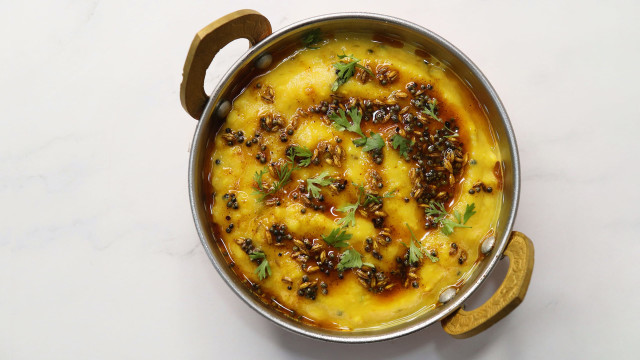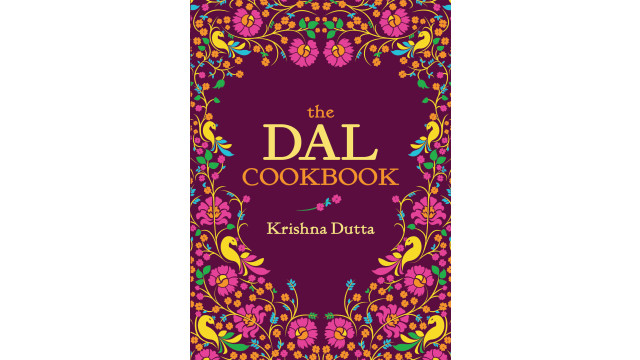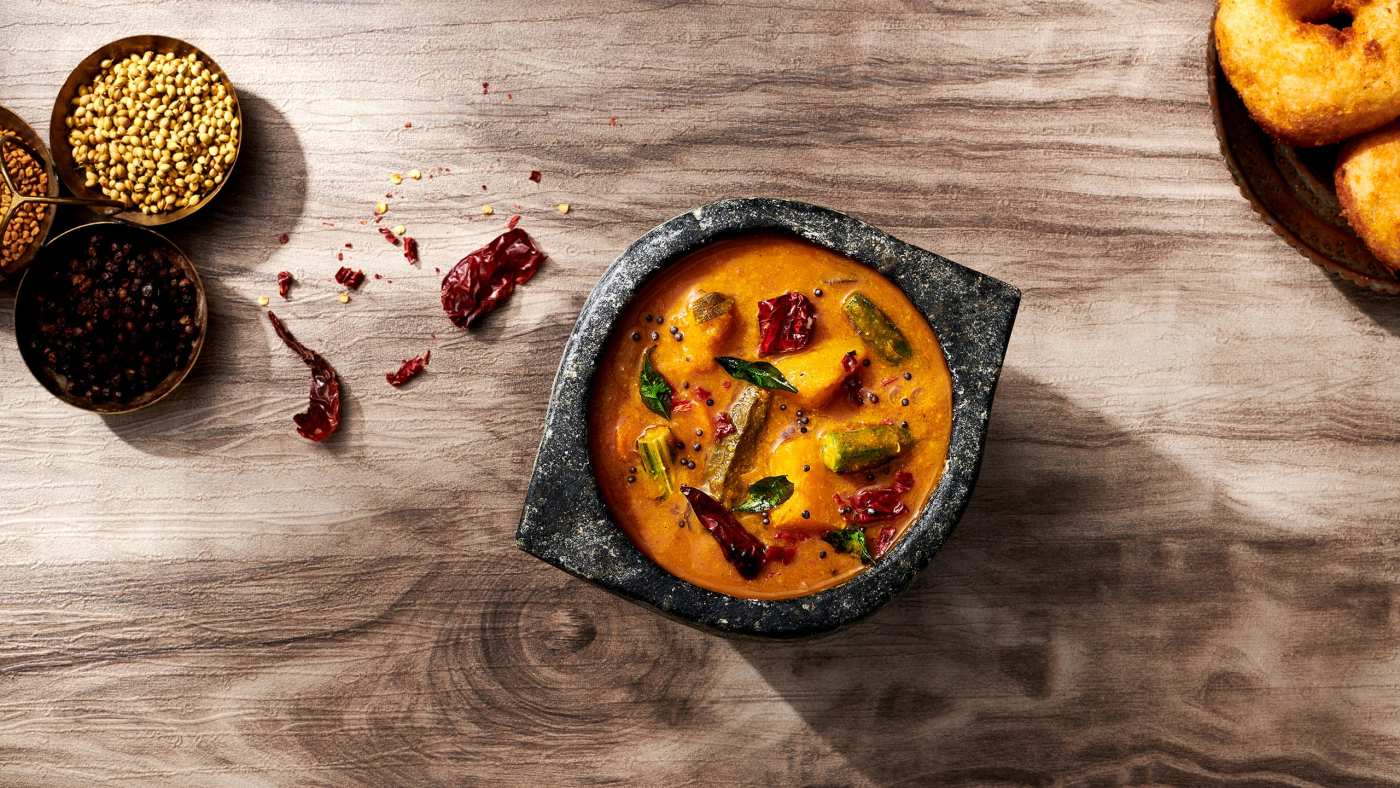
Kadamba Sambar

Kadamba Sambar
Description
For Tamils and South Indians like me, sambar is the ultimate comfort food. Some say this lentil-vegetable stew was created in Thanjavur’s royal kitchens. Regal or not, it’s loved by all and enjoyed with rice, idli, dosa, or vada. Packed with gut-friendly spices, protein-rich lentils, and fiber, sambar includes moringa for iron and B6, tamarind for heart health, and cold-pressed oils for preserved nutrients.
NOTE
You need 2 cups (250 g) of mixed vegetables. Swap in your favorites for variety.
Equipment: Traditional pressure cooker
Note:
Ingredients
4 SERVES
For the Sambar
- 3/4 cup (150 g) tur dal (split yellow peas), soaked for 30 minutes
- 2 cups water
- 1 Tbsp cold-pressed gingelly (sesame) oil, or any neutral vegetable oil
- A pinch of asafetida
- ½ tsp black mustard seeds
- A sprig of curry leaves
- ¼ tsp fenugreek seeds
- ½ cup (100 g) chopped yellow pumpkin
- ½ cup (100 g) chopped onion
- ½ cup (100 g) chopped carrot
- ½ cup (100 g) chopped okra
- 2 (50 g) drumsticks (moringa pods), cut into 2-inch batons
- 2 Tbsp (30 g) sambar masala powder
- ½ tsp turmeric powder
- 2 tsp salt
- 1 Tbsp tamarind paste
For the Tadka (Tempering)
- 1 Tbsp gingelly (sesame) oil
- ¼ tsp black mustard seeds
- 1-2 dried Byadgi chiles
- 1 sprig of curry leaves
- ¼ tsp fenugreek seeds
- A pinch of asafetida
Directions
-
Step 1
Drain the tur dal and cook in a traditional pressure cooker with 2 cups of water on high heat. After the first whistle, lower the heat, cook for 10 minutes, and turn off the heat. Wait for about 4 to 5 minutes for the residual pressure to release before you open the lid. Using a whisk, mash the dal and keep it aside. Note: If you don’t have a traditional pressure cooker, cook the lentils in an Instant Pot or a stock pot until completely soft. -
Step 2
In a medium kadhai or saucepan, heat 1 tbsp of oil. Add the asafetida and mustard seeds, followed by the curry leaves and fenugreek seeds. Temper the spices in the oil for 1 minute on medium heat. Once the mustard seeds begin to crackle, add the vegetables (pumpkin, onion, carrot, okra, and drumsticks) and sauté on a medium flame for 1 to 2 minutes. -
Step 3
Mix in the sambar powder, 1 tsp of the salt, turmeric powder, and tamarind paste. Add 1 cup of water and cook the vegetables on medium heat for about 8-10 minutes or until fork tender. -
Step 4
Once the vegetables and tamarind are cooked, mix in the cooked tur dal. Add 1 cup of water and continue to cook the vegetables and tur dal together on a gentle simmer for 4 to 5 minutes, or until the tamarind loses its raw smell. -
Step 5
Make the tempering: Heat oil in a small pan and add all the ingredients. As soon as the mustard seeds begin to pop and crackle — it takes about 30 seconds to a minute — take the pan off the heat and pour the tempering over the sambar. Serve hot with steamed rice and stir-fried potatoes, or try it with dosa, vada, or idli.
About the author
More by Nandita Iyer

Amritsari Langarwali Dal
Cookbook author and physician Nandita Iyer recreates the famous dal dish from the kitchen of gurdwaras, or Sikh temples of worship.
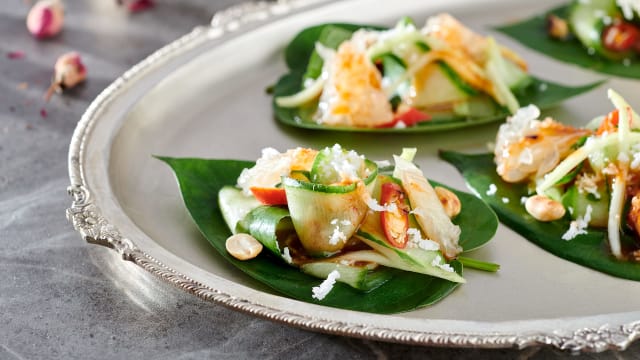
Betel Leaf & Pomelo Salad
This salad combines Indian betel leaves and a Vietnamese-inspired dressing by Nandita Iyer.

Chickpea & Sweet Potato Salad
This hearty salad is a meal in itself, with fiber-rich sweet potato and kala chana (black chickpeas) that pack a delicious a protein punch.



